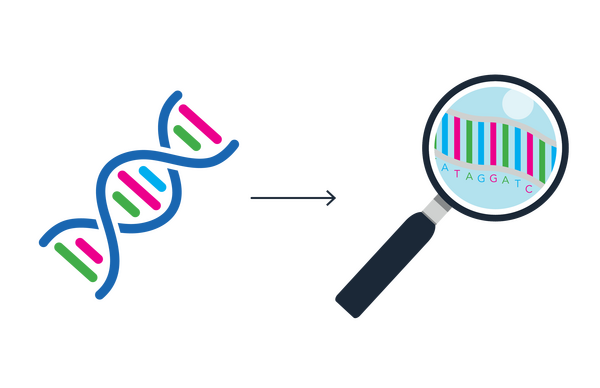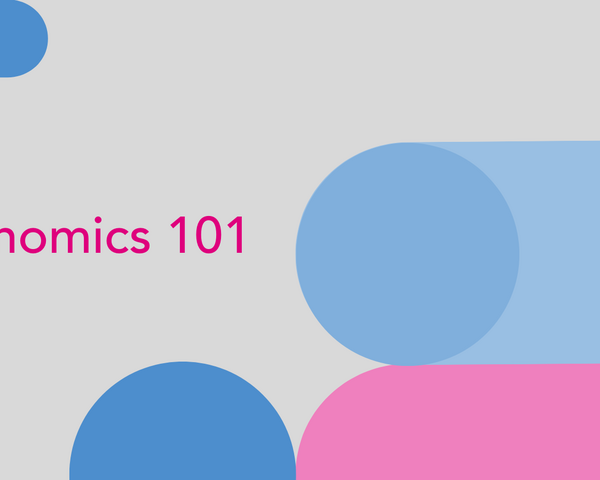Genomics 101: What is the genome?
By Florence Cornish onIn this series, ‘Genomics 101’, we go back to basics and explore some of the most important topics in genomics. In this blog, we explain what we mean by the term ‘genome’.

First things first, what is DNA?
DNA is a molecule found in all living things. It carries the genetic information we need to survive, like an instruction manual for our body.
DNA sequences are made of a 4 different ‘bases’, which we represent using the letters A, T, C and G. The cells in our body can read this sequence of letters, almost like reading a book, and produce all the different proteins we need to survive.
The order of the letters in the sequence determines which protein is produced.
What is a gene?
A gene is a section of DNA that contains a specific instruction. This instruction provides information about how we develop, function and grow.
For example, humans have genes that determine our eye colour.
The sequence of letters in these eye colour genes code for a certain amount of pigment to be produced. People with genes that code for lots of pigment will likely have brown eyes, and people with genes that code for less pigment will likely have blue eyes.
So then, what do we mean by ‘genome’?
Humans have around 20,000 genes in total, which collectively make up the complete set of instructions we need to survive.
This complete set is known as the ‘genome’, and it consists of around 3 billion letters.
Does everyone have the same genome?
No, not everyone has exactly the same sequence of letters in their genome, however, the sequence only differs by a tiny percentage from person to person.
Because the genome is so large, even this tiny percentage can mean that lots of bases are different between 2 people. Most of the time these changes have no effect, but sometimes they may impact the way we develop, function or grow, such as the eye colour example we looked at earlier.
Occasionally, changes in our genome can also affect our health.
You can learn more about these changes in our previous Genomics 101 blog: What is a genetic change?
Why is understanding the genome important?
Studying the genome can tell us lots of useful information about how our genes affect our health, particularly surrounding rare conditions and cancer.
Cancer occurs as a result of changes in certain genes, and around 80% of rare conditions are thought to have a genetic component. This means that genomic research is vital for us to enhance our knowledge of both cancer and rare conditions, as well as a potential array of other health conditions, in turn informing our approaches to diagnosis and treatment.
The 100,000 Genomes Project
The 100,000 Genomes Project was a landmark initiative that sequenced over 100,000 genomes from 85,000 participants affected by rare conditions or cancer.
It was carried out by Genomics England in close partnership with the NHS, aiming to find answers for participants whilst making whole genome sequencing part of routine care.
Though sequencing for the project was completed in 2018, approved researchers are still looking through the DNA sequences every day, to try and find answers for participants and their families.
The project led to the formation of the National Genomic Research Library and laid the foundations for the NHS Genomic Medicine Service, in which NHS patients with rare conditions and some cancers can continue to have their genomes sequenced and stored, so that researchers can help to diagnose them.
In 2022 alone, over 1,500 new potential diagnoses were returned to clinical teams in the NHS thanks to research on data in the National Genomic Research Library.
And finally...
Prefer to listen? Check out our Genomics 101 podcast: What is the genome?
Or, you can also read our other Genomics 101 blogs.

